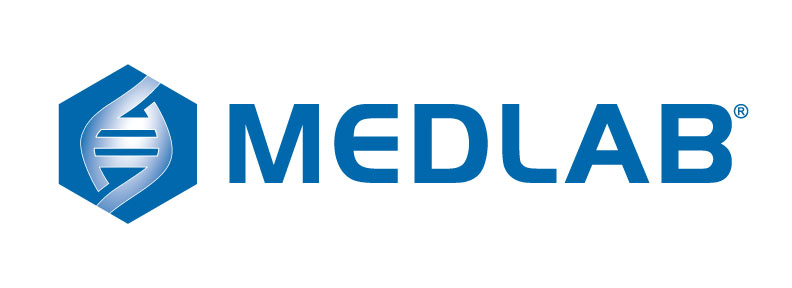|
|
| A B C D E F G H I J K L M N O P Q R S T U V W X Y Z # |
Influenza Antigen A&B Test
Test CodeINFAB
Preferred Specimen
Nasopharyngeal washing, aspirate or swab; Throat swab. Washings or aspirates preferred. Available during Respiratory Season. (October - February)
Instructions
Specimen must be transported in viral transport media (VTM) or in saline at 2-8 °C. A negative result does not rule out respiratory disease due to other etiologies. Bacterial or Viral Cultures are recommended if other etiologies are suspected. Detects and differentiates between Influenza A and Influenza B viruses.
NASOPHARYNGEAL SPECIMENS - Must be collected by Nursing Staff or Physician (Laboratory does not collect specimen)
A. Selection
1. Specimens must be collected in a manner the avoids contamination with nasal or oral flora
2. The nasopharynx can be reached by inserting a small swab through either the nose to the
throat.
B. Collection
1. Materials
a) Nasal speculum (optional)
b) Nasopharyngeal swab with transport medium
c) If Bordetella pertussis is suspected, contact the laboratory for Regan Lowe transport
media
d) If RSV or influenza viruses are suspected; use viral transport medium or saline to
transport the specimen.
2. Method
a) Remove excess secretions or exudate from the anterior nares
b) Insert the nasal speculum if you choose to use one.
c) Gently pass the swab through the nose and into the nasopharynx.
d) Rotate the swab on the nasopharyngeal membrane and allow it to remain in place to 10-
15 sec to absorb organisms.
e) Remove the swab carefully and place it in transport medium
f) Remove the speculum.
g) Alternatively, bend the wire swab at an angle and insert it into the throat. Then move the
swab upward into the nasopharynx.
h) Label the specimen with the patient demographics and specimen source
C. Transport
1. Refrigerate the specimen
2. Transport to the laboratory as soon as possible.
D. Comments
1. Nasopharyngeal specimens should not be used to detect the agent causing sinusitis.
2. Nasopharyngeal specimens are cultured primarily for whooping cough (B. pertussis) or for
meningococcal carriers (N. meningitides) or for direct antigen testing such as RSV or
Influenza.
3. Bacterial culture of nasopharyngeal swabs is not recommended.
4. Specimens received on large (culturette type) swabs will presumed to be nasal and not
nasopharyngeal and may be rejected.
5. For a nasopharyngeal aspirate in children, attach a sterile suction catheter to a Lukens trap
and introduce the end of the catheter in the nasophaynx until resistance is encountered.
Withdraw the catheter 1-2 cm and apply suction to aspirate the sample.
NASOPHARYNGEAL SPECIMENS - Must be collected by Nursing Staff or Physician (Laboratory does not collect specimen)
A. Selection
1. Specimens must be collected in a manner the avoids contamination with nasal or oral flora
2. The nasopharynx can be reached by inserting a small swab through either the nose to the
throat.
B. Collection
1. Materials
a) Nasal speculum (optional)
b) Nasopharyngeal swab with transport medium
c) If Bordetella pertussis is suspected, contact the laboratory for Regan Lowe transport
media
d) If RSV or influenza viruses are suspected; use viral transport medium or saline to
transport the specimen.
2. Method
a) Remove excess secretions or exudate from the anterior nares
b) Insert the nasal speculum if you choose to use one.
c) Gently pass the swab through the nose and into the nasopharynx.
d) Rotate the swab on the nasopharyngeal membrane and allow it to remain in place to 10-
15 sec to absorb organisms.
e) Remove the swab carefully and place it in transport medium
f) Remove the speculum.
g) Alternatively, bend the wire swab at an angle and insert it into the throat. Then move the
swab upward into the nasopharynx.
h) Label the specimen with the patient demographics and specimen source
C. Transport
1. Refrigerate the specimen
2. Transport to the laboratory as soon as possible.
D. Comments
1. Nasopharyngeal specimens should not be used to detect the agent causing sinusitis.
2. Nasopharyngeal specimens are cultured primarily for whooping cough (B. pertussis) or for
meningococcal carriers (N. meningitides) or for direct antigen testing such as RSV or
Influenza.
3. Bacterial culture of nasopharyngeal swabs is not recommended.
4. Specimens received on large (culturette type) swabs will presumed to be nasal and not
nasopharyngeal and may be rejected.
5. For a nasopharyngeal aspirate in children, attach a sterile suction catheter to a Lukens trap
and introduce the end of the catheter in the nasophaynx until resistance is encountered.
Withdraw the catheter 1-2 cm and apply suction to aspirate the sample.
Transport Container
M5 Viral Transport Media or Sterile Saline
Specimen Stability
1 hour 2-8° prior to elution

